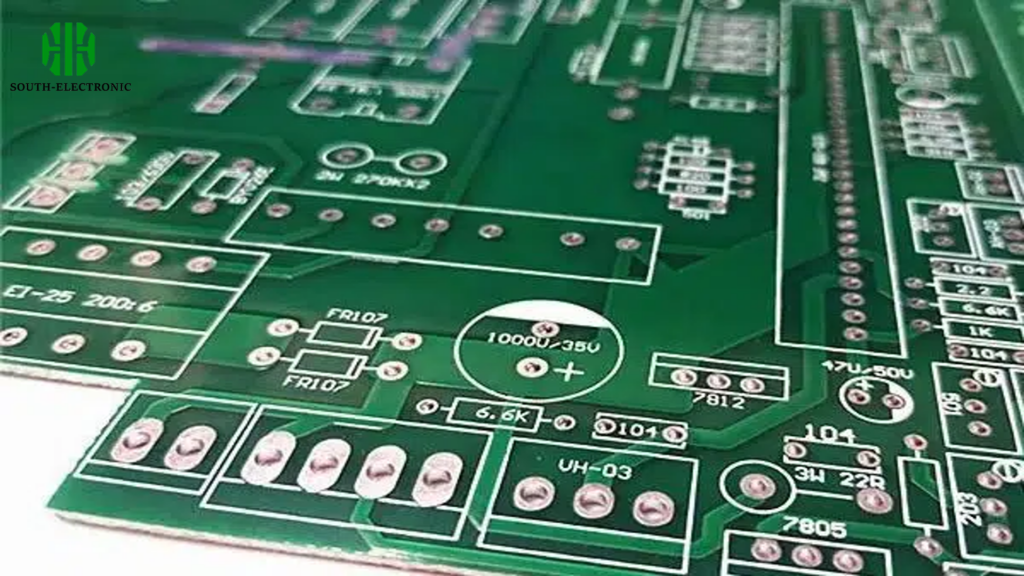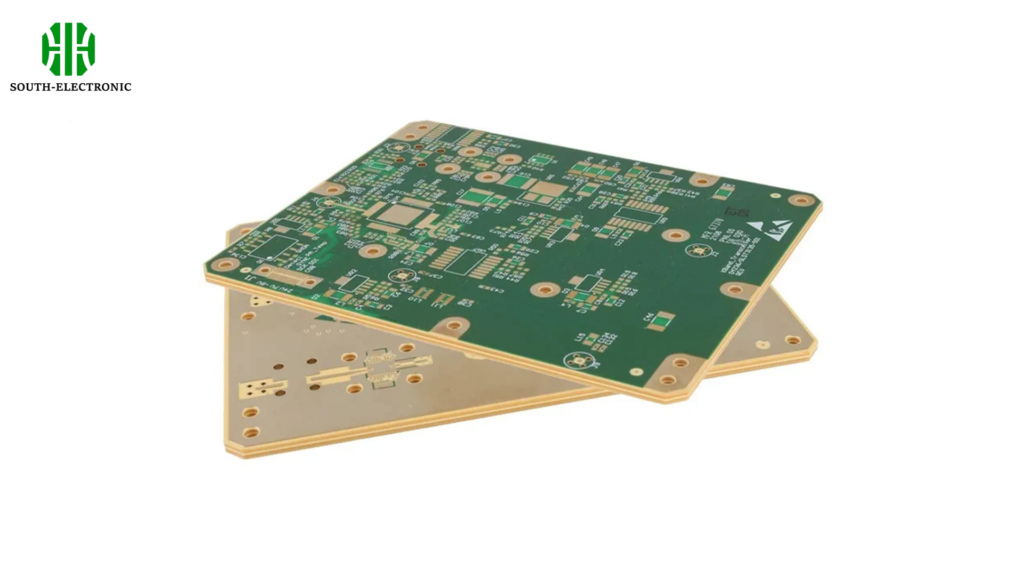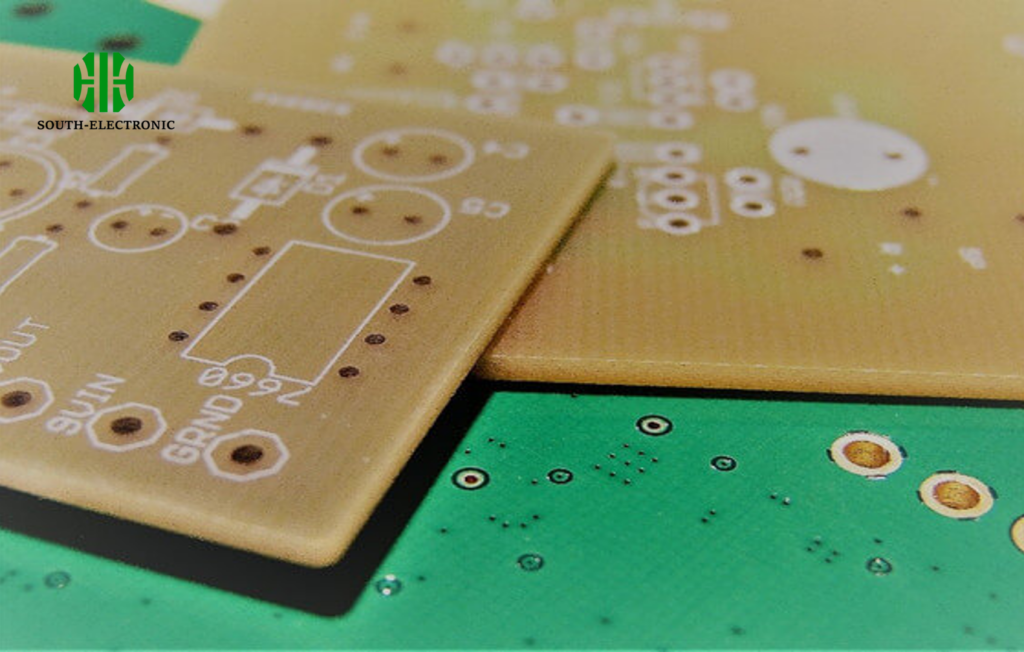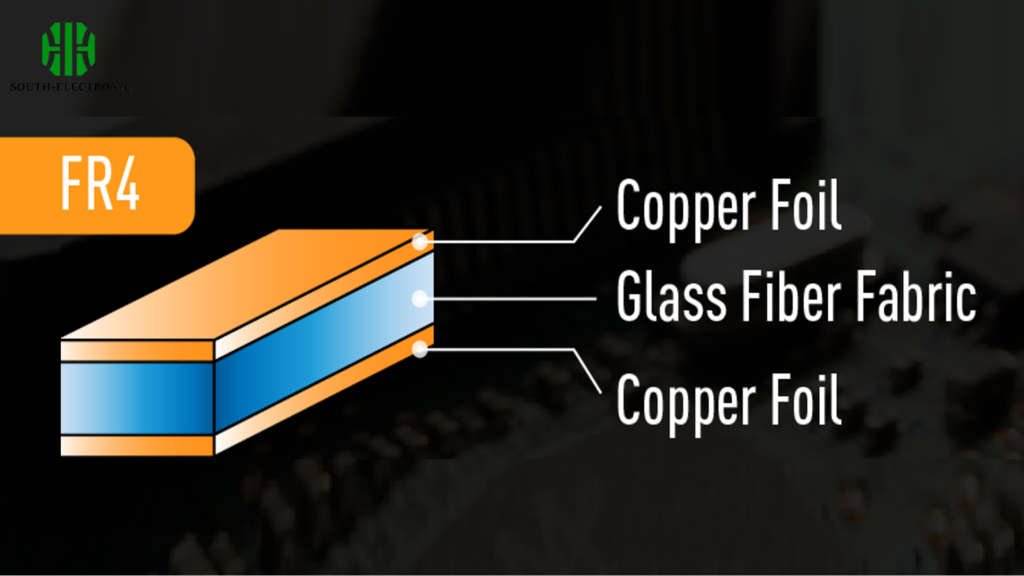FR-4 is a type of flame retardant epoxy resin laminate material that is widely used in printed circuit board (PCB) manufacturing. It is a composite material composed of woven fiberglass cloth with an epoxy resin binder, which provides excellent electrical insulation and mechanical strength. FR-4 is also known for its flame retardant properties, which make it an ideal material for use in electronic applications where safety is a concern.
What is FR-4 flame retardant?
FR4 (Flame Retardant 4) is a material that is used a lot in making printed circuit boards (PCBs). Copper layers play a crucial role in ensuring signal integrity and electrical insulation in PCBs. It is made of woven fiberglass cloth with an epoxy resin binder that is flame resistant. Double-sided circuit boards are often used in conjunction with FR-4 material. Most PCBs are made with FR4 because it is strong for its weight, resists moisture, is a good electrical insulator, and doesn’t change much in different conditions. Additionally, FR4 is often used in PCBs to isolate adjacent copper planes, ensuring proper electrical performance.
What are the Properties of FR-4 Substrate?
FR-4 substrate has several key properties that make it a popular choice for PCB manufacturing. These include:
- High electrical insulation: FR-4 has a high dielectric constant, which makes it an excellent insulator for electrical signals.
- Mechanical strength: FR-4 has a high strength-to-weight ratio, which makes it suitable for use in a wide range of applications.
- Flame retardant: FR-4 is self-extinguishing, which means that it will not continue to burn once the source of the flame is removed.
- Low moisture absorption: FR-4 has a low moisture absorption rate, which makes it suitable for use in humid environments.
- Thermal conductivity: FR-4 has a high thermal conductivity, which makes it suitable for use in applications where heat dissipation is a concern.

What is FR-4 Commonly Used In?
FR-4 is commonly used in a wide range of applications, including:
- Printed circuit boards (PCBs): FR-4 is widely used as a substrate material for PCBs due to its excellent electrical insulation and mechanical strength.
- Electrical insulation: FR-4 is used as an electrical insulator in a wide range of applications, including transformers, relays, and switches.
- Aerospace: FR-4 is used in the aerospace industry due to its high strength-to-weight ratio and flame retardant properties.
- Automotive: FR-4 is used in the automotive industry due to its high thermal conductivity and mechanical strength.
- Consumer electronics: FR-4 is used in a wide range of consumer electronics, including smartphones, laptops, and tablets.

What are the electrical properties of FR4 substrate?
FR4 is great for PCBs because it has a bunch of properties that make it really useful. It is also the most common grade of dielectric material used in the fabrication of circuit boards, making it a standard choice in the industry.
- Electrical Insulation: Excellent dielectric properties, which are crucial for maintaining the integrity of the electrical signal.
- Mechanical Strength: Robust structural integrity, which helps in handling and machining.
- Thermal Resistance: Can withstand high processing temperatures, typically up to about 130°C. FR-4 has good thermal resistance properties, making it suitable for applications requiring durability under heat.
- Moisture Resistance: Offers good performance in humid conditions.
- Chemical Resistance: Resistant to many chemicals used in the electronics manufacturing process.
- Flame Retardancy: Meets UL 94V-0 classification, making it resistant to fire.
- Thermal Properties: Understanding the thermal properties of FR-4 is essential for ensuring effective thermal management and signal integrity in high-speed and high-frequency circuit boards.
Selecting the right laminate materials like FR-4 is crucial for thermal management and impedance considerations in PCB design.
What is FR4 commonly used in pcb manufacturing?
FR4 is generally more affordable compared to high-performance materials like polyimide or PTFE, which are used for high-frequency applications. Understanding PCB materials is crucial to creating high-quality circuit boards. The cost-effectiveness of FR4, along with its robust performance characteristics, makes it a popular choice for a wide range of standard applications in the electronics industry. A thin layer of copper foil is laminated to FR-4 glass epoxy panels, contributing to the composition and functionality of PCBs. FR-4 laminate material remains the substrate choice for many applications because of its low cost and mechanical properties. However, it can be more expensive than some entry-level materials like phenolics or paper-based laminates, which are used in less critical applications.

How is FR4 graded and what are the different grades?
FR4 material is graded based on its mechanical and electrical properties, which affect its suitability for various applications. A thin layer of copper foil is typically laminated to the FR-4 glass epoxy panel, which is essential for defining the material composition and functionality of these boards. Here’s a table outlining some of the common grades of FR4 and their characteristics. One key property is its dielectric constant, which varies between 3.8 and 4.8 depending on the glass weaving style, thickness, and resin content.
| Grade | Description | Typical Use Cases |
|---|---|---|
| Standard | Basic level of thermal resistance and mechanical strength | Consumer electronics, general-purpose PCBs |
| High-TG | Higher glass transition temperature for better heat resistance | High-power and high-temperature applications |
| Halogen-Free | Does not contain halogens, making it more environmentally friendly | Applications requiring eco-friendly materials |
| High-Speed | Improved electrical properties for better performance at high frequencies | Telecommunications, advanced computing |

What are the limitations of using FR4 in PCB design?
While FR4 is versatile, it does have some limitations:
- Thermal Conductivity: FR4 has poor thermal conductivity, which can be a limitation in high-power applications where heat dissipation is crucial.
- High-Frequency Performance: At very high frequencies, FR4’s electrical properties (like dielectric constant and loss tangent) may not be suitable, which can lead to signal integrity issues in applications like RF and microwave circuits.
- Mechanical Flexibility: FR4 is rigid, which makes it unsuitable for flexible circuits where materials like polyimide are preferred.
- Moisture Absorption: FR-4 has a low moisture absorption of 0.10% when immersed in water for 24 hours, which contributes to its reliability in humid environments.
- Flame Retardancy: FR-4 meets the UL94V-0 standard for flammability, ensuring it is resistant to fire hazards in various applications. Flame retardants in FR-4 materials play a crucial role in preventing or delaying fire spread, enhancing safety and performance in electronic applications.
Conclusion
FR4 is a key player in PCB manufacturing, known for its great combination of toughness, affordability, and flexibility. While it may not be the best choice for high-power or high-frequency situations, it can be used in a wide range of applications.



